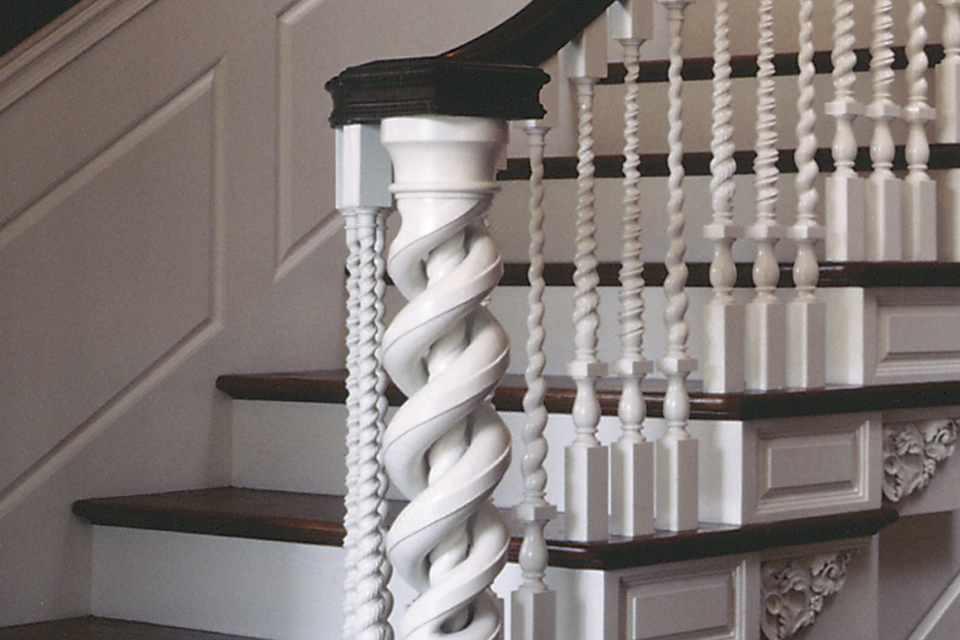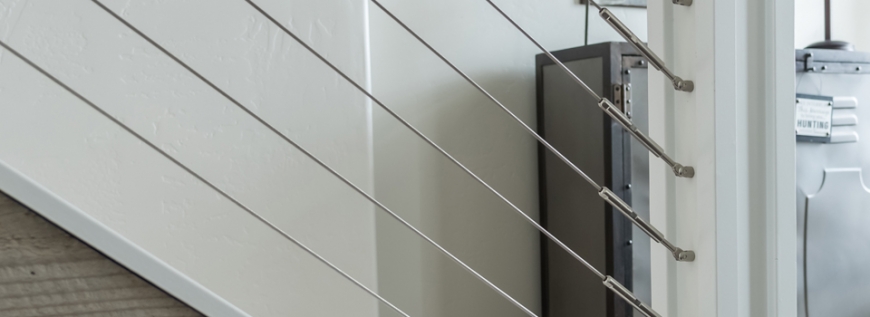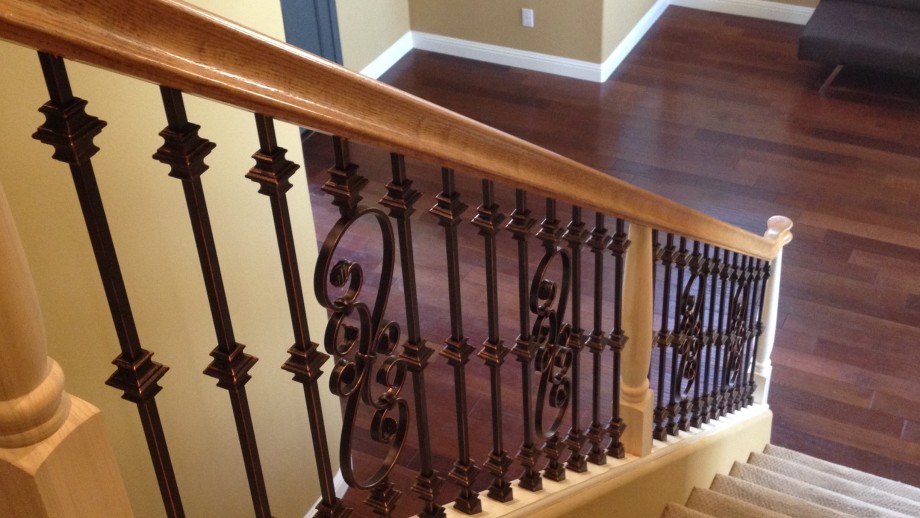Demand for modern stairways is keeping Martin Stairways busy.
Completing as many as 125 different stairway installations every year, the father and son team at Martin Stairways has installed more than 1,700 stairway systems in southern California in the last 15 years.
“I started this business three decades ago,” said Martin Crandell, owner of Martin Stairways in Santa Ana, California. “Then my son, Darren, joined in 2005. All we do is stairway installations for residential remodel projects.
“In Orange County there are many houses from the 1970s. We get calls every day from people wanting to upgrade to a more contemporary stairway system or get rid of carpets on their stairs. Many younger couples buy an older home in this marketplace. Then they decide the railings are placed too far apart and could be a hazard for their children. They call us to upgrade the stairway systems for the sake of both style and safety.”

Stair parts and materials
Crandell has relied primarily on L.J. Smith Stair Systems to supply him with stair parts and materials.
“We manufacture all the wooden components that we offer, which would include balusters, newels, handrail, fittings, starting steps, and all accessories in wood that trim out a stair,” said L.J. Smith’s Craig Tickner. “We also have custom capabilities for all of these products.”
Recently, Martin Stairways has installed several stainless steel interior architectural stair systems available in the Innovative Architectural Metal Design line from L.J. Smith. The stainless steel tube, cube, cable and glass systems are designed in Malo, Italy, by the Gonzato Group. The L.J. Smith plant in Corona, California, delivers components to Martin Stairways twice a week
“These elegant stainless steel stairway systems are definitely catching on in our area,” said Darren Crandell. “Once people see the streamlined look, they’re hooked. It’s exciting for us to work with metal and combine it with wood.”
“The most common upgrade today is homeowners removing their wood balusters and replacing with iron,” Tickner said. “L.J. Smith offers a product called Iron Pro which makes this project a DIY simple installation.”
“We are seeing a continuation of iron balusters being installed, and L.J. Smith also has two products that are part of a current trend in design: cable and tube systems and a unique panel system. Box newels and Craftsman design are very popular also.
“The main use is iron balusters with wood railing and newels. As mentioned, our panel and cable systems are also being used with wood components.”

Stairway trends
According to Martin Crandell, modern, sleek looks are what is popular in stairway systems on the West Coast.
“We used to do lots of rail systems with scrolling,” said Martin Crandell. “That’s been replaced now by people looking for more simplistic styles. Plus, we’ve also witnessed the popularity of white oak skyrocketing in the past few years.
“White oak combined with stainless steel creates a beautiful stairway system. Another great marriage is walnut and stainless steel. These are popular trends on the West Coast that we believe will migrate east in the very near future.”
L.J. Smith’s main operation is in Bowerston, Ohio, which does full line manufacturing. Other locations in Puyallup, Washington, Ball Ground, Georgia, and Corona California, are all light manufacturing.
Craig Tickner said that L.J. Smith has three main segments: Lineal, turnings, and accessories. From receiving to each work center, material is received and prepared for final production runs.
The company uses industry standard lathes for newels and balusters. Fingerjointers, glue presses, and moulders are used for rail. Copy lathes are used for custom products.
“L.J. has continually evaluated and added machines to improve all capabilities of manufacturing stair parts,” Tickner said.
A licensed general contractor for more than 30 years, Crandell “stumbled” into his career specialty of stairways.
“I was on a job decades ago where the stair guy quit,” said Crandell, who also has an interior carpentry license in California. “The contractor pointed at me and told me to finish the stair job. That was my start.
“I learned to do curved stairs, which everyone likes. Then I just kept fine-tuning my skills and getting better at my job. When you’re on a jobsite, the stair guy is seen as an artist. Other contractors always stop to watch what we’re doing because it’s such a specialized skill.”
As his business grew, Crandell’s son joined the company. “I helped train Darren and he learned on the job,” said Crandell. “Stairway creation is craftsmanship at its finest. We understand that each system we create becomes a physical feature of a home. That’s an important responsibility that we take seriously.”
See https://www.ljsmith.com/ http://www.martinstairways.com/







Have something to say? Share your thoughts with us in the comments below.